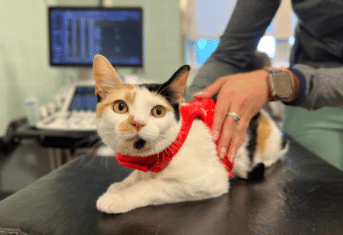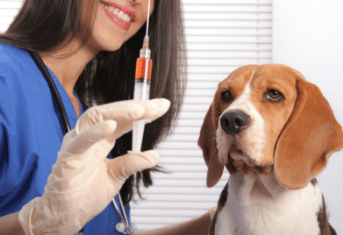Everyday Medicine: Oxygen Therapy
Everyday Medicine: Oxygen Therapy
 Everyday medicine will be an intermittent series of blog posts highlighting tests, treatments and procedures commonly used at the AMC. Some past examples of this type of blog post include “Vital Signs” or “Five Reasons Veterinarians Love Fluid Therapy.” Today’s blog post will tackle the topic of oxygen therapy, a common treatment at the AMC.
Everyday medicine will be an intermittent series of blog posts highlighting tests, treatments and procedures commonly used at the AMC. Some past examples of this type of blog post include “Vital Signs” or “Five Reasons Veterinarians Love Fluid Therapy.” Today’s blog post will tackle the topic of oxygen therapy, a common treatment at the AMC.
Oxygen is a colorless, odorless and tasteless chemical and despite this seemingly innocuous profile, we can’t live a minute without it. Every veterinary hospital has a stash of green metal cylinders containing compressed oxygen for use in patients needing oxygen therapy.
What pets need oxygen therapy?
The lungs collect oxygen from inspired air and transfer it to the red blood cells. The heart distributes blood throughout the body and thus moves oxygen to every organ. Any disease that impairs lung, blood or heart function, if severe enough, may impair oxygen delivery. Examples of diseases where oxygen delivery is compromised include: pneumonia, bruised lungs, anemia, and congestive heart failure.
How do veterinarians know a pet patient needs oxygen therapy?
Nearly any emergency patient showing signs of difficulty breathing will be immediately treated with oxygen therapy, while initial testing is performed to determine the cause of the breathing impairment. The AMC ER uses a device called a pulse oximeter to measure the amount of oxygen in the bloodstream. The probe clips onto the ear, lip or tail. Pets with low oxygen levels will continue to receive oxygen therapy.
How is oxygen administered?
The AMC’s ER and ICU both have specially designed cages for administering oxygen. Instead of bars, the doors are solid Plexiglas and the cage features a valve to control the amount of oxygen delivered into the cage. Oxygen might also be administered via a mask held over the dog or cat’s nose. For pets needing to move about the hospital for tests and procedures, this is a portable oxygen delivery method. This method is commonly used if a pet in congestive heart failure needs an EKG or a cardiac ultrasound. Really big dogs don’t fit into most oxygen cages. In those dogs, veterinarians administer oxygen directly into the nasal passages using special tubes.
What other uses are there for oxygen?
Pets undergoing general anesthesia for surgery or teeth cleaning receive oxygen as part of the anesthesia protocol. Once the breathing tube is placed into their trachea or windpipe, a mixture of oxygen and anesthetic gas is pumped through the breathing tube to maintain the pet under anesthesia. When the procedure is finished, the anesthetic gas is discontinued and the pet breathes only oxygen until adequately awake from anesthesia.
Oxygen, a chemical element required by all living things, is critical to veterinarians’ ability to provide lifesaving treatments to our patients.

































